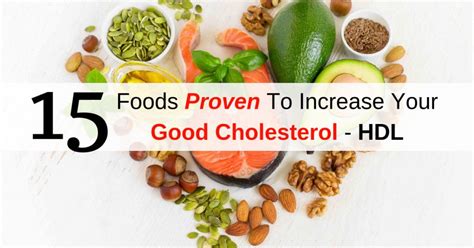How to Raise Good Cholesterol: A Comprehensive Guide
High cholesterol is often discussed in terms of the "bad" cholesterol (LDL) that clogs arteries. But what about "good" cholesterol (HDL)? Boosting your HDL levels is crucial for heart health, and it's something you have significant control over. This comprehensive guide will explore effective strategies to naturally raise your good cholesterol.
Understanding HDL Cholesterol
Before diving into how to increase HDL, let's briefly understand its importance. High-density lipoprotein (HDL) cholesterol acts as a scavenger, removing excess cholesterol from your arteries and transporting it back to your liver for processing and removal from your body. Higher HDL levels are associated with a lower risk of heart disease, stroke, and other cardiovascular problems. Aiming for optimal HDL levels is a proactive step towards better heart health.
Proven Ways to Increase HDL Cholesterol
Several lifestyle modifications can significantly impact your HDL levels. Here are some effective strategies:
1. Embrace Regular Exercise
Physical activity is paramount. Regular aerobic exercise, such as brisk walking, jogging, swimming, or cycling, is exceptionally effective in boosting HDL. Aim for at least 150 minutes of moderate-intensity or 75 minutes of vigorous-intensity aerobic activity per week. Even short bursts of exercise throughout the day can contribute positively.
2. Maintain a Healthy Weight
Obesity is a significant risk factor for low HDL. Losing even a small amount of weight, if you're overweight or obese, can noticeably improve your HDL levels. Focus on a balanced diet and regular exercise for sustainable weight management.
3. Quit Smoking
Smoking dramatically lowers HDL cholesterol. Quitting smoking is one of the most impactful changes you can make for your overall health, including improving your HDL levels. Seek support if needed – many resources are available to help you quit.
4. Dietary Adjustments: The Power of Food
Your diet plays a crucial role in influencing HDL cholesterol. Focus on incorporating these foods:
- Fatty Fish: Salmon, tuna, mackerel, and sardines are rich in omega-3 fatty acids, known to boost HDL.
- Avocados: These creamy fruits are packed with monounsaturated fats, beneficial for raising HDL.
- Nuts and Seeds: Almonds, walnuts, flaxseeds, and chia seeds are excellent sources of healthy fats and fiber.
- Olive Oil: Use olive oil as your primary cooking oil. Its monounsaturated fats contribute to higher HDL levels.
- Fruits and Vegetables: A diet rich in fruits and vegetables provides essential vitamins, minerals, and antioxidants that support overall cardiovascular health.
5. Limit Saturated and Trans Fats
These fats are notorious for lowering HDL. Reduce your intake of red meat, processed foods, fried foods, and baked goods made with unhealthy fats. Check food labels carefully and choose products low in saturated and trans fats.
6. Manage Stress
Chronic stress can negatively impact HDL levels. Practice stress-reducing techniques like yoga, meditation, deep breathing exercises, or spending time in nature.
When to Consult a Doctor
While lifestyle changes are highly effective, it's crucial to consult your doctor for regular check-ups and to discuss your cholesterol levels. They can provide personalized advice, monitor your progress, and suggest further steps if needed. Don't rely solely on self-diagnosis or online information; professional medical guidance is essential.
Conclusion: Taking Control of Your Heart Health
Raising your good cholesterol is an achievable goal with consistent effort. By incorporating these lifestyle changes into your routine, you can significantly improve your HDL levels and reduce your risk of heart disease. Remember that consistency is key, and even small improvements contribute to long-term heart health. Start today and take control of your well-being!
